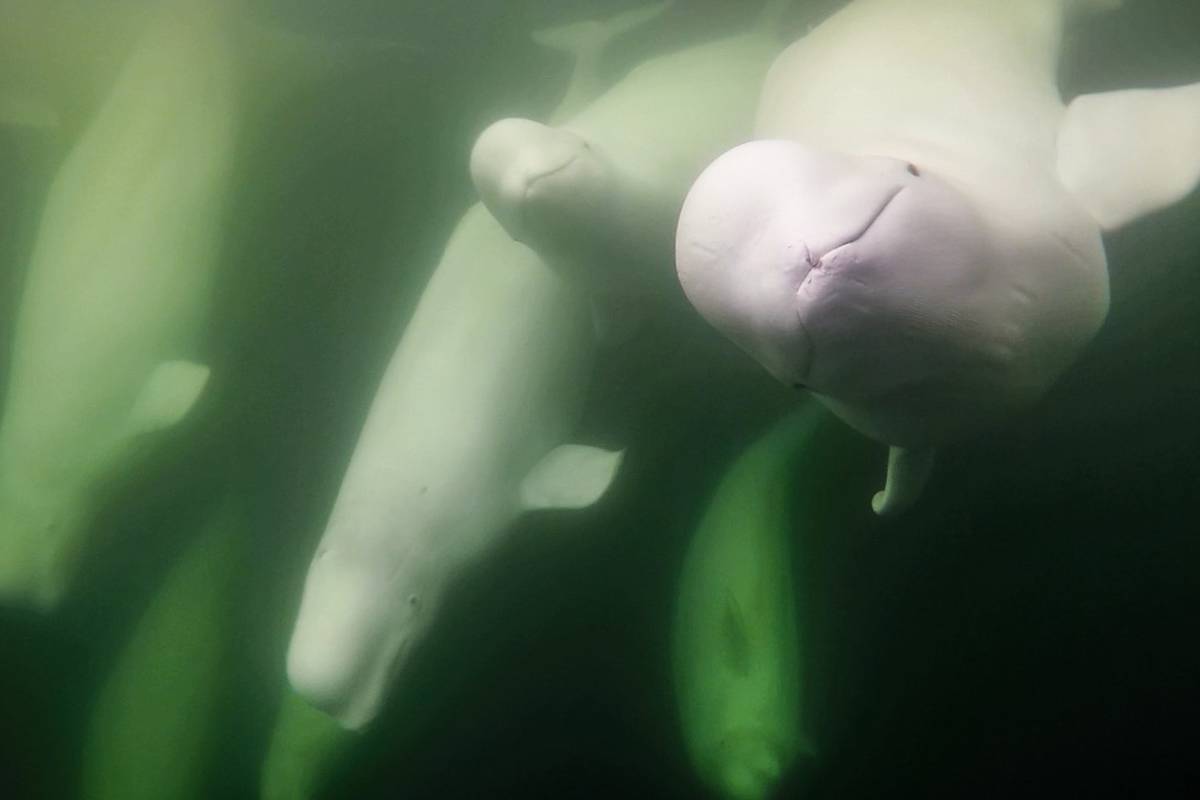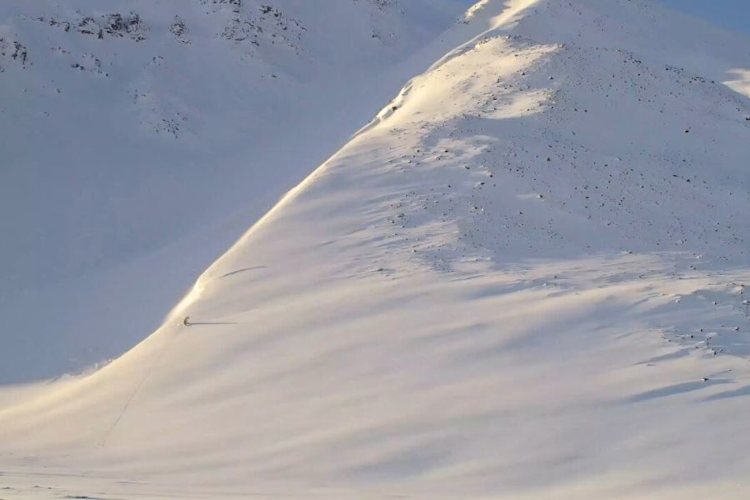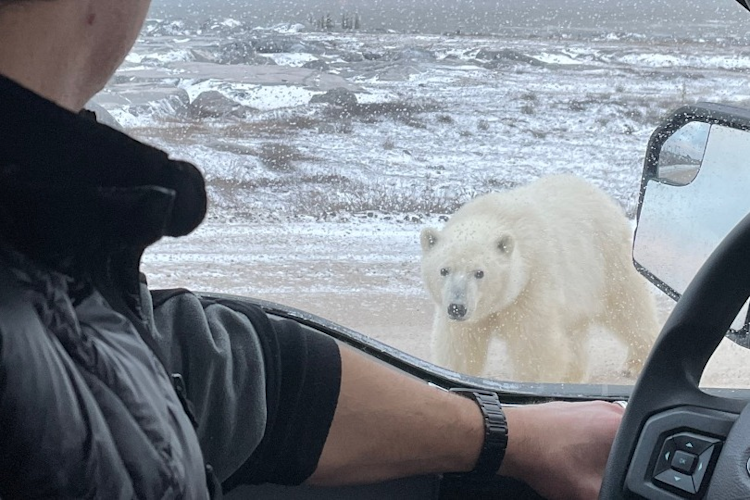Churchill, Canada -- July 15, 2022 -- Polar Bears International (PBI), the only nonprofit organization dedicated solely to polar bears and Arctic sea ice, will host Arctic Sea Ice Day on July 15, a day created by Polar Bears International to spark actions and conversations that bring attention to the rapidly melting Arctic ecosystem, why it matters, and how people around the globe can slow this warming trend. The Arctic is now warming three times as fast as the rest of the planet, causing the sea ice to melt. Sea ice serves as the earth’s air conditioner, helping to keep our planet cool. It's important to work together to protect the sea ice that all of us rely on.
Sea Ice and Beluga Whales
To honor Arctic Sea Ice Day, Polar Bears International and explore.org, the world’s largest nature live streaming network, will launch the Beluga Whale Live Cam, broadcasting from the Churchill River where it meets Hudson Bay. The live cam provides audiences around the globe with a front-row view into the annual migration of more than 57,000 beluga whales, who come to the warm waters of the Churchill River estuary to feed, molt, and give birth to their young. The Beluga Cam feeds into the Beluga Bits citizen science project, a collaboration between the Assiniboine Park Conservancy, explore.org and Polar Bears International, which asks people to capture and classify screenshots from the Beluga Cam. Since Beluga Bits was launched, the project has had nearly 22,000 registered participants who’ve contributed nearly 5 million photo classifications and roughly 22,000 volunteer hours. Belugas rely on sea ice for protection from predators and for feeding. Unlike many other whales, belugas lack a dorsal fin which allows the relatively slow-moving whale to use the sea ice to hide from the fast-moving orca whales.
Beluga Boat Updates: Meet Delphi
New this summer, the beloved Beluga Boat finally has a name, both for safety, and for fun! The Churchill team dubbed it “Delphi,'' short for the beluga whale’s scientific name, Delphinapterus leucas. (The genus name Delphinapterus, means "dolphin without a fin." The species name leucas, means "white.")
In another first this year, the Delphi captains will be able to see the underwater live cameras while steering the boat. BJ Kirschhoffer, Polar Bears International director of field operations, is working with the Churchill team to install a new underwater camera as well as a new camera mount that automates the lifting and lowering of the underwater camera. These innovations will improve the boat’s ability to support the Beluga Bits research project and other potential machine-learning and technology-based projects and will greatly enhance both the operator and viewer experience as well as the quality of the research data.
“The Arctic affects us all, with the impact of sea ice health stretching far beyond this ecosystem. On Arctic Sea Ice Day we connect the dots between the warming Arctic, polar bears, beluga whales, and people,” says Krista Wright, executive director of Polar Bears International, adding, “We are excited to share the beluga whale migration with the world and build a community that cares about protecting the Arctic for future generations. Together, we can slow global warming, in turn saving the sea ice and the creatures that depend on it, with a collective, swift transition to renewable energy.”

















